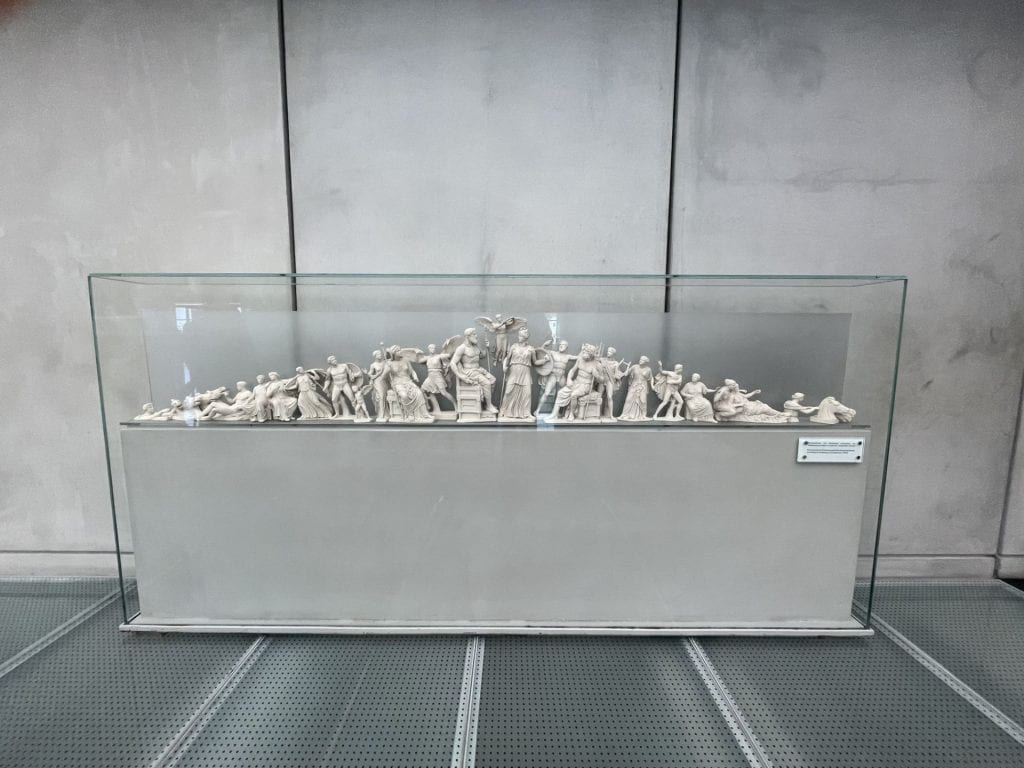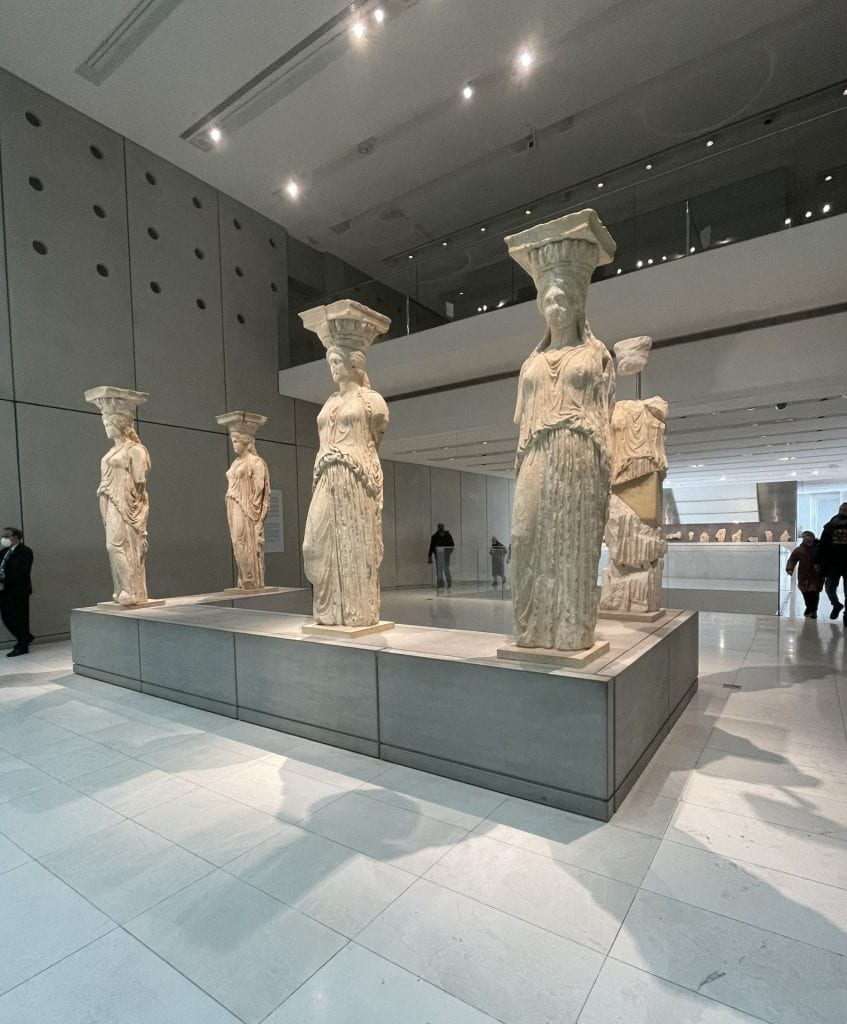Athens: How the Presence of Ancient History Affects our Memory of the Past
Georgia Flynn
As someone who has always loved Greek mythology and the stories of Ancient Greek civilization, going to Athens and seeing things like the Parthenon was an amazing experience for me. I’ve learned about this culture and loved it for so long, but I didn’t know if seeing these sites in real life would ever be a reality for me, making this trip to Athens something to remember. An unmissable quality of the city is the presence of ancient history through structures like the Parthenon to artifacts, architectural remains, and representations of ruins in their prime in the Acropolis Museum. The presence of ancient history strengthens our ability to remember the past in a real and tangible way and to be transported back into the times of these physical things.

Being at the Parthenon in particular, I felt transported back to the days of Ancient Greece. It amazed me how large and impressive the structure was in person. Our lovely tour guide explained how the columns and floor were designed in such a way through their slopes and curves to make the building appear light and alive rather than sinking and heavy, despite it being made out of tons of marble. Something that stuck out to me was that the columns of the Parthenon consisted of both older marble and new white marble. The stone of the ancient structure, now slightly yellowed with age, exposure, and pollution, contrasted with the brilliant white of the marble used to patch and restore the structures. I found this aspect important, as it doesn’t tamper with or take away from the original structure, but rather pay respects to what remains and attempts to reclaim history without taking away from what is left, a conversation between old and new. The Parthenon has obviously deteriorated over the thousands of years since it has been built by weather, wars, and entitled Englishmen stealing pieces of the structure, but the substantial portion that is left gave me pause and really brought me back mentally to how the Parthenon looked during the golden age of ancient Greece, how it was used as a temple and the site of festivals to Athena. Seeing the physical sites of famous mythological events, such as where Athena brought about the first olive tree into existence, in real life showed me how the past is truly all around us, albeit hidden under the progression of time into the modern era. I thought of how much love and respect the people of Athens had for their gods and goddesses, primarily Athena, the namesake of their city. The same went for remains of structures and statues throughout the city such as the Theatre of Dionysus. The amount of incredible creations dedicated to the gods and goddesses, spirits, etc. shows how these figures were so much a part of ancient Greek culture and life. The rich spiritual and mythological history of the city is still very much present and amazing to see intertwined and with everyday life. I was struck by the fact that these incredible ancient structures and artifacts were so normalized and present in the lives of Athenian people, for instance, I could not imagine passing the Acropolis on my way to work everyday. Famous myths and stories I’ve learned through a Greek Mythology class I took in highschool as well as my childhood obsession with the Percy Jackson books and Greek mythology as a whole resurfaced in my mind as I walked through the ancient structures so incorporated into everyday life.

The Parthenon Museum was another amazing way to feel the presence of ancient history. The museum was full of ancient artifacts from the height of Ancient Greece, which once again brought me back mentally to Ancient Greece and how I was walking were people in that time period once walked, seeing things that they once saw. Replicas of the pediment of the Parthenon, now destroyed, showed where the majestic statues of gods and goddesses were in the time of Ancient Greece and helped me to imagine the still magnificent structure in the height of its glory. I was able to walk through sculptures that had crowned the Acropolis in different periods of Ancient Greece and look at relief carvings of mythological events such as the Amazons or the Centaurs fighting the Greeks. As I looked once again at these tangible pieces of the ancient world, I felt more connected to the past and was more engaged in my curiosity about the history here. The physical presence of ancient history really allows us to connect with the past and brings an element of reality to the legendary civilizations of the past.






